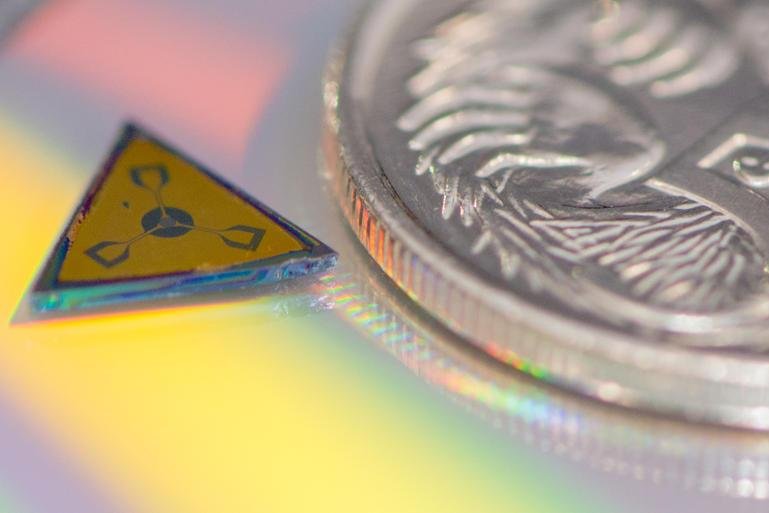A model microwave circulator is pictured next to an Australian five cent coin. Photo by Steven Waddy/University of Sydney
Nov. 28 (UPI) -- A team of scientists in Australia has developed an important new quantum computing component called a microwave circulator. Researchers say their invention will allow for the scaling-up of quantum computers.
The component is the first practical realization of the theoretical work describing topological insulators -- work that garnered the 2016 Nobel Prize in Physics.
Topological insulators are materials that operate as a unique phase of matter. The materials' internal structures operate as insulators, while their surfaces serve as conductors.
By manipulating these materials, scientists were able to build a circuit interface capable of mediating the interactions between quantum and classical systems. Such a component is essential to the construction of a real-world quantum computer.
The microwave circulator works like a traffic roundabout, sending electric signals in only a single direction, clockwise or counter-clockwise.
Commercial circulators, found in mobile communication base stations and radar systems, are prohibitively bulky.
Using topological insulators, scientists at the University of Sydney succeeded in miniaturizing the technology. The new materials allow scientists to effectively slow the speed of light, which allowed them to shrink the component without sacrificing performance. Scientists believe their breakthrough will allow for many circulators to be integrated onto a single computer chip.
Researchers believe the breakthrough will allow scientists to develop practical quantum computers, capable of performing real-world functions.
"It is not just about qubits, the fundamental building blocks for quantum machines. Building a large-scale quantum computer will also need a revolution in classical computing and device engineering," David Reilly, a professor at the University of Sydney, said in a news release.
The qubit is a two-state quantum-mechanical system, or system with two possible states -- a particle that can exist simultaneously in two different forms. The phenomenon is called qauntum superposition. When one quantum state is manipulated, the manipulation can be measured in the other quantum state, enabling the teleportation of information.
So far, scientists have only been able to develop rather simple quantum computers.
"Even if we had millions of qubits today, it is not clear that we have the classical technology to control them," Reilly said. "Realizing a scaled-up quantum computer will require the invention of new devices and techniques at the quantum-classical interface."
The newly invented microwave circulator -- detailed this week in the journal Nature Communications -- is one such device.
"Such compact circulators could be implemented in a variety of quantum hardware platforms, irrespective of the particular quantum system used," said Alice Mahoney, doctoral candidate and lead author of the new study.
Though a practical quantum computer is still several years away, scientists believe their latest breakthrough sets the stage for the advancements necessary to realize such a device.















